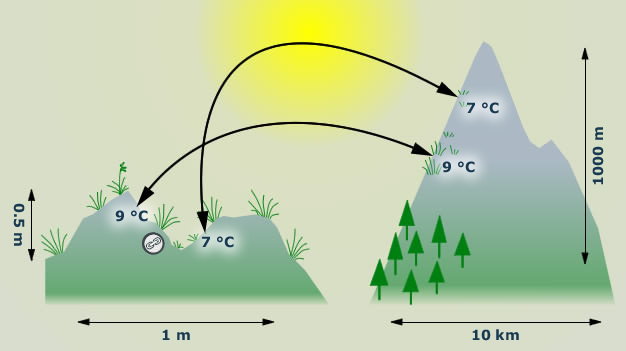 |
|
|
|
|
|
|
A part of the characteristics of the Alpine is that temperatures can change rapidly and differ dramatically over short distances (Fig. 1). Hence, what may be predicted as a maximum warming scenario of 2-3 K higher temperature can be found in (or may even be exceeded by) the difference between the two sides of a single mountain crest or even in small topographic gradients. Rapid global warming is thus initially more likely to shift such topography driven mosaics of vegetation than to induce large scale shifts of vegetation belts. |
|
1 - A 2 K warming of the climate may not exceed differences in microhabitat temperatures found across a few cm or dm of distance. Alpine plants often have local, short distance escape routes, because of topography. On the other hand, such natural short distance thermal contrasts are excellent "experiments by nature" which permit the study of warming effects in situ by clever observation. |
29 August 2011 |
||
| |
||
